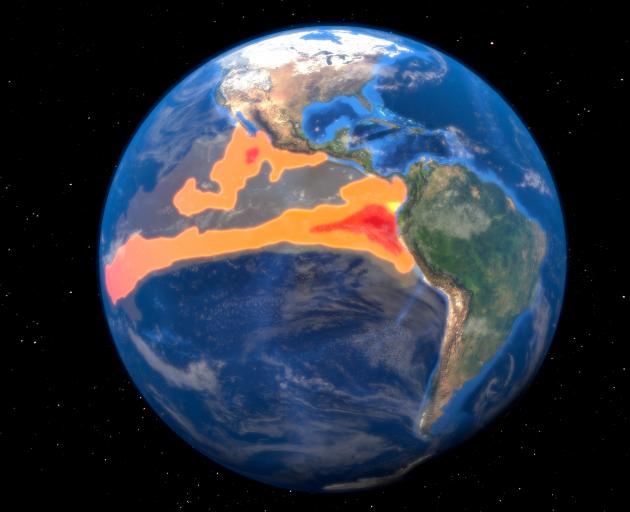

El Nino is not part of climate change, but in 2024 it will get piled on top of a lot of climate warming that has happened over the past seven years, so it’s certain to break all previous records. The question is by how much. Jim Hansen says by a lot.
"The 1.5°C limit is deader than a doornail," Hansen told me last month, "and the scenarios you would need to stay under 2°C are just imaginary."
"No more than 1.5°C" was the limit we were told to aim for to avoid big jumps in the average global temperature. "Never more than 2.0°C" was the absolute limit, because after that "runaway" would become likely. Both gone, he says.
The world crossed the threshold into +1.2°C about two years ago, and the general assumption was that we would stay in that zone for at least the next five years.
But 2023 ended up at around +1.4°C, with huge wildfires, massive floods and storms, killer heat waves — and Hansen says this year, with the El Nino boost, will be much worse.
"I argue that within the next year or two (2024-25) we will go up to 1.6°C, 1.7°C warming. Then after the El Nino finishes, it will drop back — but it’s not going to drop all the way back to 1.2°C.
"It may go down to 1.4°C or so, but because the planet is so far out of equilibrium it’s not going to drop much. So we’re already at sort of the 1.5°C warming limit, and we’ve got +2°C in the pipeline by some time in the middle to late 2030s is my estimate."
Hansen has the tickets to make these claims because he has been a climate scientist all of his long life (he’s 82), and he has the distinction of being the man who went to the US Congress in 1988 and persuaded them to take the new threat of climate change seriously. It didn’t last, but that’s not his fault.
On the other hand, all scientists get things wrong on the way to getting them right — that’s how science works — and Hansen is challenging an official scientific consensus, embodied in the reports of the Intergovernmental Panel on Climate Change (IPCC), that has endured for around 15 years now.
That doesn’t means he’s wrong, but it also doesn’t mean he’s right. In this particular case, it would be comforting if Hansen turned out to be wrong, because the implications of his being right are pretty horrific.
The man leading the charge against Hansen is Michael Mann, a scientist of comparable stature who had a significant role in creating the current consensus. (That is, the consensus that says we still have a chance of staying below +1.5°C until 2035, and could conceivably still be there when we arrive at "net zero emissions" in 2050.)
Mann responded to Hansen’s paper within a few days of its publication in November. After a few ritual expressions of respect for Hansen’s record, he got down to business: "I feel that this latest contribution from Jim and his co-authors is at best unconvincing". (What would "at worst" be, then?)
"I don’t think they have made the case for their main claims, i.e. that warming is accelerating, that the planetary heat imbalance is increasing, that aerosols are playing some outsized role, or that climate models are getting all of this wrong.
"And I certainly don’t think that they’ve made the case for engaging in potentially disastrous planetary-scale geoengineering projects."
That last is a reference to Hansen’s conclusion that the situation is so dire and so urgent that we need "geoengineering" measures to hold the heat down almost immediately.
These are two climate scientists of high reputation and long experience having an argument that concerns the fate of high-tech human civilisation on this planet.
Neither is very optimistic about our ability to deal with the climate threat: even Mann, dismissing Hansen’s arguments, says "It’s bad enough already."
But how are we lesser beings to choose between their arguments? Hansen has been kind enough to give us a tool. He has predicted that there will be a big jump in the average global temperature (up to half a degree more than El Nino would account for) by this April or May.
It wouldn’t prove or disprove his entire thesis, but what happens by May would substantiate or invalidate one important part of it.
Wait for spring, and see what happens.
- Gwynne Dyer is an independent London journalist.












